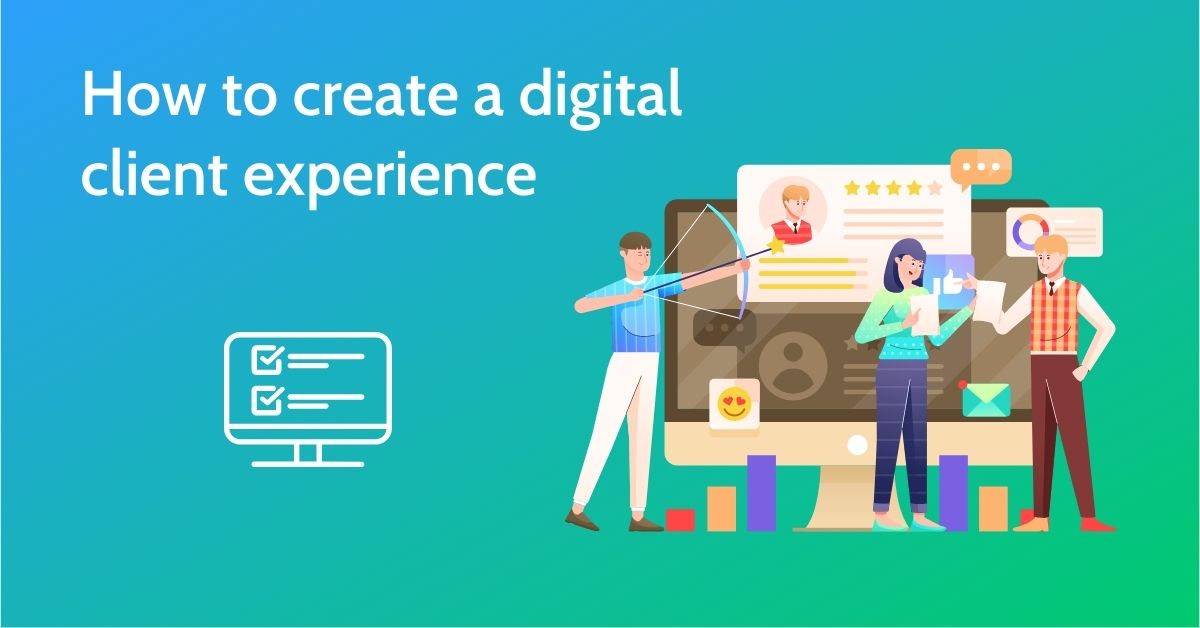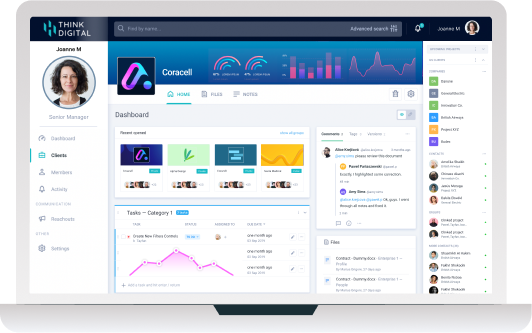Our prospects often ask us if Clinked is a CRM. It’s a great - and fair - question.
Clinked has groups that are based on members. Those members can have detailed contact information associated managed by our clients or those members. Clinked admins can send emails (called Reach Out) from Clinked to members of any or all groups. Lots of these functionalities and more would be considered components of a CRM and we certainly compliment a CRM (even integrate with most!) However, Clinked is not a replacement to a CRM system – Clinked is a complimentary system focussed on client knowledge.

What’s the distinction between CRM and Client Knowledge you may ask? We’re glad you asked and will use this blog as an opportunity to present the distinction - excuse us, but our headquarters are located in a town that cultivates many of the finest academics at the University of Cambridge so hope this isn’t too wonky for you!
What is a CRM?
A Customer Relationship Management (CRM) system is a technology used to manage all interactions with prospects through the sales process. In managing these interactions, a CRP can be used to create workflows and processes to better organise and report on an organisation’s sales and marketing channels – whether inbound or outbound in nature. A CRM can also be used increasingly to carry out marketing tasks such email campaigns, hosting landing or blog pages, and integrating with social media.
In a nutshell, CRMs are the digital Rolodex (plus sum) of businesses today!
How are CRMs used?
A CRM is mainly used as a central environment to pull in all of the data about your prospective clients and those who convert to clients. This includes records of interactions with these prospects, information about their company such as revenue, number of employees and contact details, and a profile of their website and social media.
Advanced CRMs can offer additional functionality such as interaction tracking (i.e. email tracking plug-ins, phone tracking, campaign tracking), properties for contacts, companies and deals, and detailed reporting to analyse the sales pipeline. In addition, CRMs can offer add-on packages to meet business needs such as email marketing, social media integration, landing page creation, and blog hosting. For instance, Nonprofit CRM like Virtuous provides a comprehensive suite of tools designed for nonprofit management, enhancing the capabilities of traditional CRM systems.
Many cloud-based CRMs (i.e. not on-premise or computer-specific) offer integrations with other cloud-based SaaS products directly or using integrator solutions such as Zapier.
Read More: How to Choose SaaS CRM Software For Your Business
Can you conduct client management using a CRM?
Many companies do. Since a CRM holds contact, company and sales data from the awareness and engagement components of the client journey. A CRM can be great tool for one-to-many jobs such as sorting clients into marketing lists to send email campaigns, monthly newsletters and invitations to events for existing clients. However, the day-to-day management of clients is where CRMs often fall down as it is not built for this purpose.
Why you may ask? Let’s explore this through the example - the onboarding process for many businesses (i.e. contract signed & use of product or service begins) can be straightforward with a single email introducing a new client to their point of contact, let’s call that person Alexa, going forward.
After that introduction, Alexa and the new client will use email to go back and forth in ways such as sharing documents and receiving feedback, setting tasks, etc. The use of email could be ideal if the CRM has email tracking. However, Alexa’s CRM does not have this therefore Alexa must self-select which emails to import into the CRM or add notes after each interaction so her wider team to be able to read the communication. Also, Alexa must add weekly or monthly summaries of the client interactions for wider client portfolio reporting. That’s a lot of admin (i.e. time not spent delighting the client)!
Keep in mind this example does not take into account the security risks or human error components of sending client data via email that businesses need to take into account in their client practice.
My email has become a “file cabinet” of client correspondence, but my team doesn’t see it and vice-a-versa - can I save that in a CRM?
This is certainly not best practice; however, it happens across many organisations because, well let’s be frank, everyone is very busy managing competing interests and task to obtain new or delight existing clients and forget to take that next admin step. Many CRMs have identified this need and are supporting the behavioural change with an integrated technology offering as a solution.
Increasingly, organisations are upgrading their CRM to incorporate the ability to store client correspondence. Usually, this upgrade includes the use of an email plugin that, when enabled, automatically pull in all of your client conversations from your email service to your CRM. This can be a huge benefit as there’s a central location of what’s been communicated and handy if a team member is out sick or leaves the team.
As mentioned in the example above, Alexa’s organisation hasn’t been able to undertake the transformational change project to upgrade their CRM (whether due to budget or time needed to implement). As such, she needs to choose the most important emails to saves into the CRM manually if she wants keep her team aware of those interactions in her “file cabinet”. This is again a lot of admin and time away from Alexa’s client-facing role - and, likely no matter how diligent Alexa is, an email that could be important to someone else in the business may not be added into the CRM. Client knowledge is getting stuck in the “file cabinet” in each inbox across her team and the value cannot be leveraged across the organisation through data and trend analysis.
What is Client Knowledge?
Client knowledge is the junction between external clients and internal team members. Client knowledge incorporates all the processes to deliver to clients – from internal client-facing team processes to interactions and processes with clients. Whether that’s collaborating on documents, getting contracts signed, or organising client events. Providing your clients with this level of transparency will allow you to build a strong, trusted relationship.
There are 4 key stages of client knowledge: 1. contract signing, 2. onboarding, 3. implementation and 4. ongoing client management. Each stage will be different for each company based on the services and products offered as well as client profiles.
Regardless of your business’s style in these 4 stages of client knowledge, the crux of delighting a client is consistent service and support provided after the sale to ensure loyal, long term clients. This isn’t possible without setting operational process and workflows across your client-facing team to reduce friction in your client’s journey.
How does Clinked help with this?
Clinked picks up where CRM ends and client knowledge begins. Clinked is a two-sided platform with advanced permissions and groups to allow client-facing teams to work better for their clients.
Our clients use Clinked to go beyond the usual one-way file transfer tools of the past. A Clinked portal offers a branded, secure and mobile platform to invite, manage and interact with clients. Our users build and strengthen long-term relationships with clients by capturing team and client interactions in real time to measure engagement and health of a client relationship (i.e. help fight unknown issues & churn!).
Also, clients are able to use Clinked integrations with all of the big CRM’s (Hubspot, Salesforce and Pipedrive) by using our Zapier integration. This allows the automation between these CRM systems and Clinked to complete workflows such as creating a new client group once a new client has come onboard – i.e. say a sale is won in Hubspot, a new client is created in Clinked and the appropriate contacts can be invited for contracting, onboarding, implementing and management based upon your team’s workflow and processes.
Have a technical team that can manage APIs? Awesome, many clients are able to use our Clinked open API designed for developers to accomplish your internal workflow goals.
Curious to learn more?
Schedule a time to speak with our team to discuss your need. We’re excited to speak about the solution of Clinked for your client knowledge needs.








Let Us Know What You Thought about this Post.
Put your Comment Below.